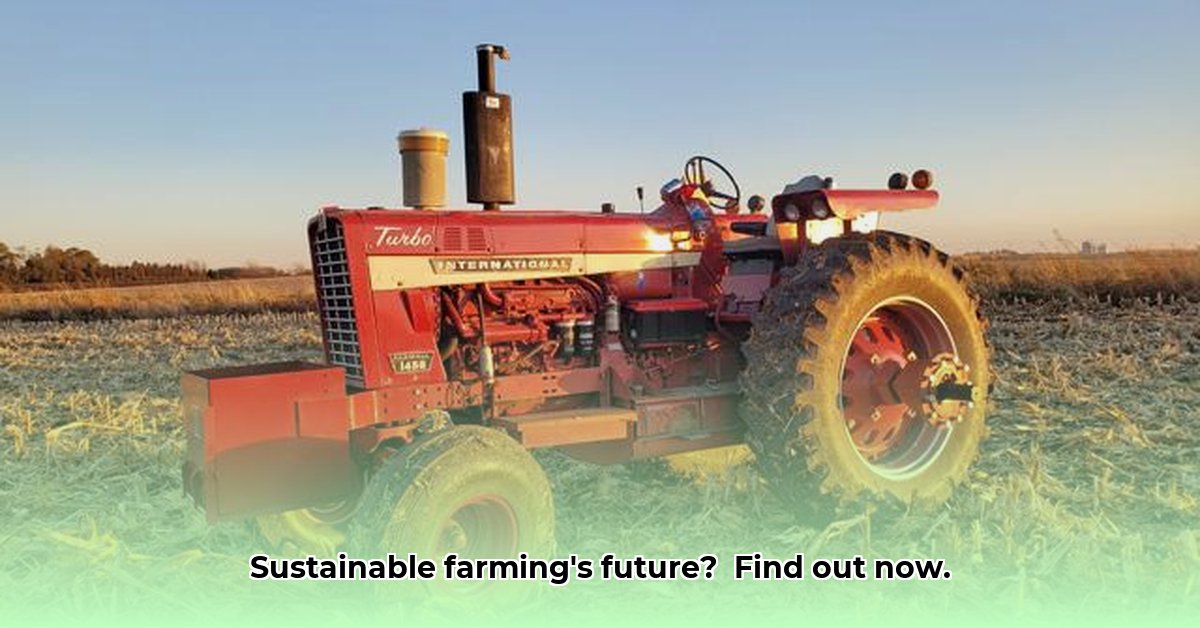
Choosing the right tractor is a critical investment for any sustainable farm. This guide helps you navigate the options, focusing on reliability, fuel efficiency, and long-term sustainability. We'll explore top brands, key factors to consider, and actionable steps to make an informed decision. For more on reliable brands, check out this helpful guide.
Top Tractor Brands: A Comparative Overview
Kubota, Mahindra, and John Deere consistently rank among the most reliable tractor brands. Kubota's in-house manufacturing often leads to tighter quality control and potentially faster repairs. Mahindra's global presence ensures wider parts availability and a robust service network. John Deere, a long-standing industry leader, boasts a reputation for durable, long-lasting machinery. However, reliability depends on factors beyond the brand, including model year, specific features, and proper maintenance. Even the best tractors require careful consideration.
Factors Determining Tractor Reliability
The brand name is only the starting point. Several key factors determine a tractor's longevity and performance:
- Maintenance: Regular servicing is crucial, much like maintaining a car. Consistent maintenance dramatically extends a tractor's lifespan.
- Operating Conditions: Harsh terrains and intensive use naturally accelerate wear and tear.
- Dealer Support: Easy access to skilled mechanics and readily available parts is invaluable. A reputable local dealer can save significant time and money.
- Technological Advancements: Modern tractors frequently incorporate advanced technologies like GPS guidance and automated steering. While enhancing precision and reducing waste, the long-term reliability of these electronic components is still evolving and requires consideration.
Sustainable Farming and Tractor Selection
Sustainable farming necessitates careful consideration of fuel efficiency and advanced technology. Many manufacturers offer GPS-guided implements and automated steering systems, improving accuracy and minimizing waste. However, the long-term dependability of these advanced systems can vary, making thorough research essential. The entire lifecycle of the tractor – from manufacturing to disposal – should be factored into your sustainability assessment.
Your Actionable Guide to Tractor Selection
This step-by-step plan helps you find the best tractor for your needs:
- Assess Your Farming Needs: Identify your primary tasks, required horsepower, and land size. Consider the crops you grow and your typical tillage practices. Matching the tractor size to the farm's workload is crucial for both efficiency and sustainability.
- Compare Specific Tractor Models: Analyze individual models from your preferred brands. Carefully review fuel efficiency ratings and technological features.
- Find a Reliable Local Dealer: A reputable dealer with readily available parts and skilled technicians adds value to any tractor purchase. Check online reviews, request references, and personally visit dealerships before choosing one.
- Calculate the Total Cost of Ownership: The initial purchase price is only part of the equation. Include fuel, maintenance, and potential repair costs in your calculations. A tractor with higher initial cost may prove more affordable in the long run due to lower fuel consumption and longer life.
- Test Drive (If Feasible): Get hands-on experience with the tractor to evaluate its ease of use, maneuverability, and comfort.
Assessing Risks Associated with Advanced Tractor Features
Advanced features, while beneficial, present potential points of failure. Understanding these risks and mitigation strategies is vital:
| Technology/Feature | Likelihood of Failure | Impact of Failure | Risk Mitigation Strategies |
|---|---|---|---|
| Advanced Electronics (GPS) | Moderate | High | Implement redundant systems, ensure regular software updates and reliable diagnostics from your dealer. |
| Hydraulic Systems | Moderate | Moderate | Maintain a rigorous maintenance schedule and proactively monitor for leaks. |
| Engine | Low | High | Prioritize regular maintenance, use quality lubricants, and implement preventative service measures. |
| Transmission | Low | Moderate | Adhere to proper operating procedures and maintain fluid change schedules. |
Fuel Efficiency: A Cornerstone of Sustainable Farming
Fuel efficiency is paramount for sustainable farming, reducing both operating costs and environmental impact. Consider tractors with fuel-saving technologies, such as efficient engines and power management systems. Compare fuel consumption data across models with similar horsepower ratings, focusing on long-term fuel costs.
Exploring Alternative Fuels and Technologies
Beyond diesel, explore biodiesel from renewable sources and emerging electric tractor options. Evaluate the availability and cost of alternative fuels locally, ensuring your infrastructure supports your choice.
The Importance of Soil Health and Minimizing Compaction
Sustainable agriculture prioritizes soil health. Heavy tractors can compact soil, reducing water infiltration and hindering plant growth. Choose tractors that minimize compaction, consider wider tires, and explore conservation tillage methods to reduce soil disturbance.
Financial Planning and Incentive Programs
Calculate the total cost of ownership, including purchase price, fuel, maintenance, and repairs. Check for government subsidies or incentives that might offset the costs of fuel-efficient or alternative fuel tractors.
Remember, choosing a tractor is a considerable financial commitment; investing in a reliable, fuel-efficient model aligns with both your financial interests and your commitment to sustainable practices. Your wise choice today contributes to your farm's long-term success.